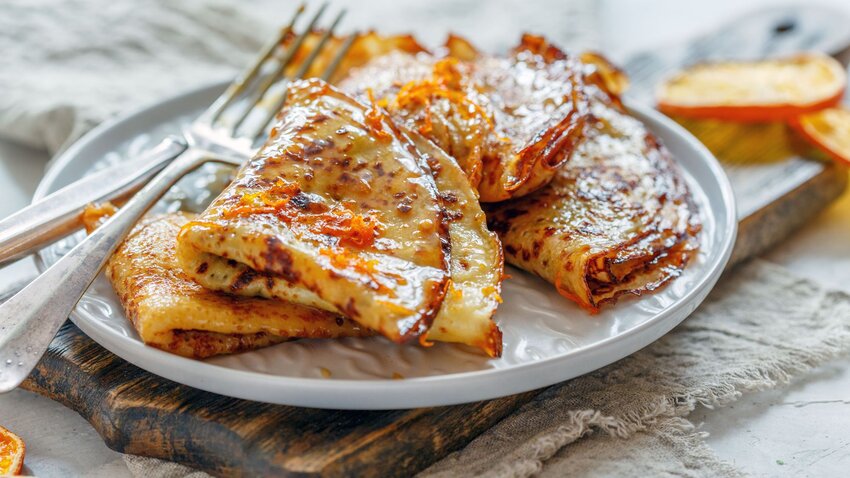What happens when a French peasant, unwilling to waste even the tiniest bit of food, accidentally drips some thin oatmeal on a steaming griddle? If ever you want an example of mistakes being gateways to genius, look no further than the humble origin of the crêpe.
This classic French treat is crispy, soft, deliciously seasoned, and packed full of inventive and traditional flavors. Americans aren’t exactly strangers to crêpes, but for the real deal, we need to go back in time and get to know the heart and soul of this thin-battered meal. Our time-traveling exploration lands us in Brittany, France.
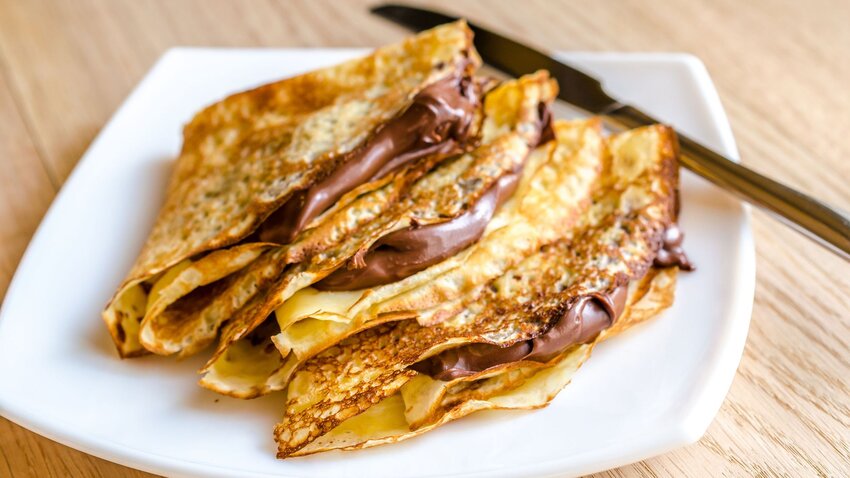
The Origins
In northwest France, there’s a peninsula reaching out into the Atlantic Ocean. It’s a region seeped in Celtic heritage, which had quite the contentious relationship with France before officially joining the sovereign nation. It’s known for many things, including wide coastlines, a bit of rain, a key history in the Second World War, advocates for regional independence, and of course, the crêpe.
We should take food myths with a grain of salt, or with whatever ingredient supposedly made up the first of its kind — in the crêpe's case, mixed crushed cereals. The first ever crêpe was apparently more of a thin oatmeal that crisped over the fire in 12th century Brittany. Since then, the recipes have exploded across generations and landscapes.
The Crêpe Essentials
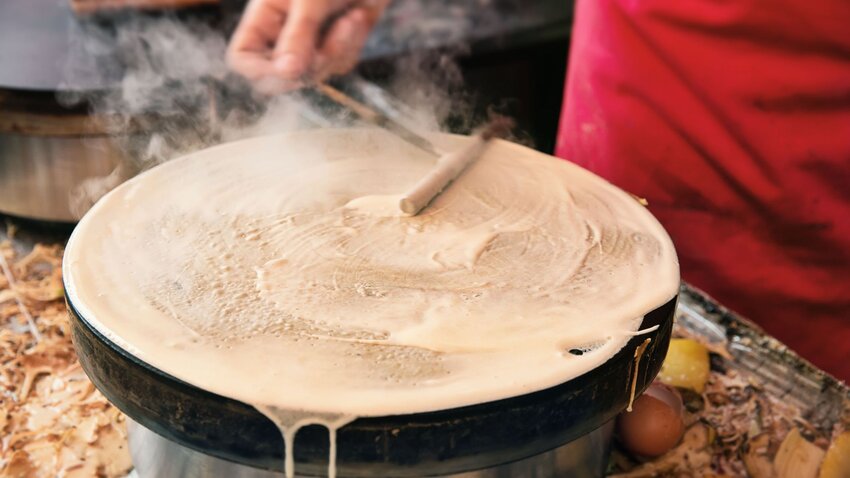
A ladle tips a thin batter over a round griddle that steams immediately, producing a scent that’s something between a thick American pancake and a croissant baking. The skin of the crêpe caramelizes, giving it a golden-brown, honeycombed appearance.
Now here’s where things get more interesting. In Brittany, there are two main kinds of crêpes. Galettes are made with buckwheat and are heartier, an entire meal in a lightly crisped package. Then there are crêpes sucrées made with wheat flour and stuffed full of sweet fillings. In Brittany (or Bretagne), crêperies are on practically every corner and frequented for everything from casual meals to celebrations.
While Americans tend to associate crêpes with breakfast or brunch, crêpes aren’t typically a part of French morning. Crêperies open for lunch and dinner, and considering the amount of ingredients that can be wrapped in the thin dough, it’s no surprise they’re more commonly visited for the heaviest meals of the day.
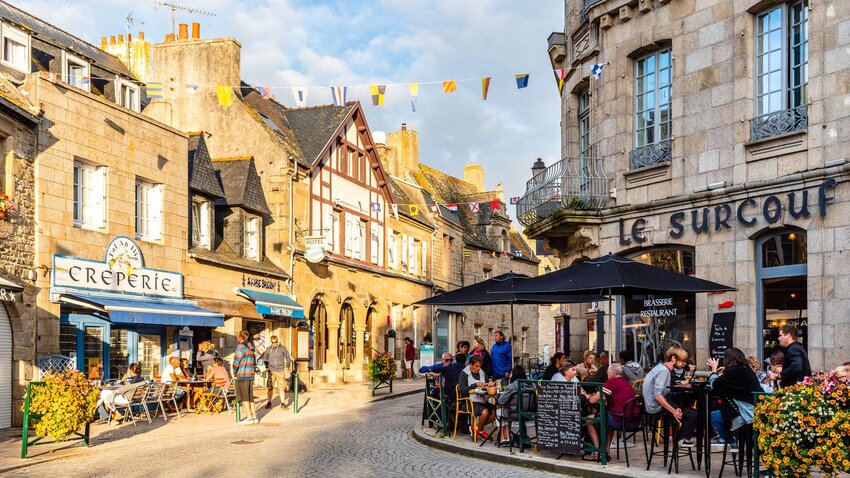
Flipping for Crêpes
Fillings are varied and seemingly never-ending. All crêperies have their own styles and variations, but some are regional staples. Traditional Breton families will start with a simple crêpe, almost like an appetizer. These are plain, buttered, covered in a fine coating of lemon juice, or lightly sugared. Then comes the galette.
From the outside, these main courses look like neatly wrapped square packages. The edges fold inwards, leaving a window in the center where a sunny-side-up egg sits, ready to be pierced. Caramelized onions and mushrooms, cheese, ham, tomatoes, smoked salmon, or maybe even a few greens make their appearance as the crêpe is sliced open. But the ingredients in your galette are entirely dependent on the limits of your imagination; pick from some of the pre-arranged menu listings or ask for substitutes. They’ll arrive hot, melty, and will be gone before you’ve spent much time admiring them.
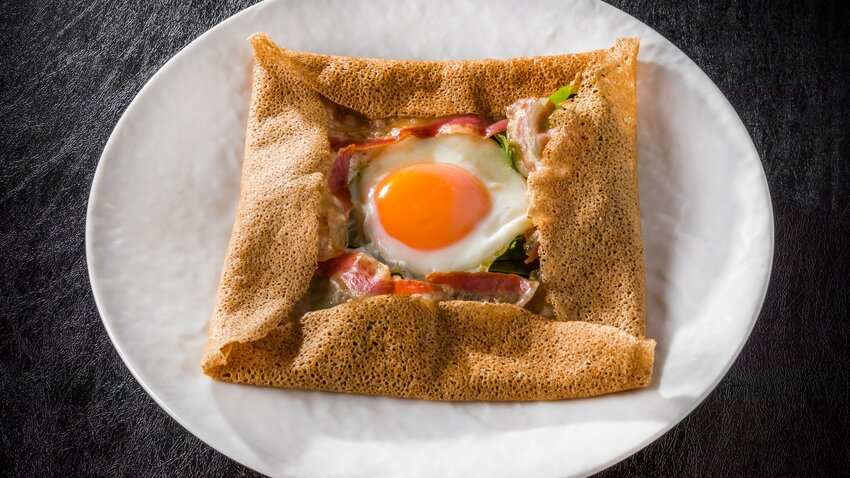
During your meal you’ll sip traditional Breton cidre, a rustic and refreshing apple-cider accompaniment in any crêperie. Low in alcohol, it’s not uncommon to polish off an entire bottle (or more) between heaping forkfuls of crêpes. Before you’ve mourned the disappearance of your galette for long, you’ll have to make the second most difficult decision in a crêperie: dessert.
Nutella or chocolate with banana, raspberries, or strawberries? Or, there’s salted caramel, lemon and sugar, jams and preserves, ice cream, or even poached pears with dark chocolate. If you’re in the celebrating mood, you may want a crêpe Suzette: a crêpe with tangerine or orange-zested caramel and liqueur that’s flambéed before your eyes. Then, you’ll have to decide if your crêpe will be completed with a heaping dollop of Chantilly (whipped cream).
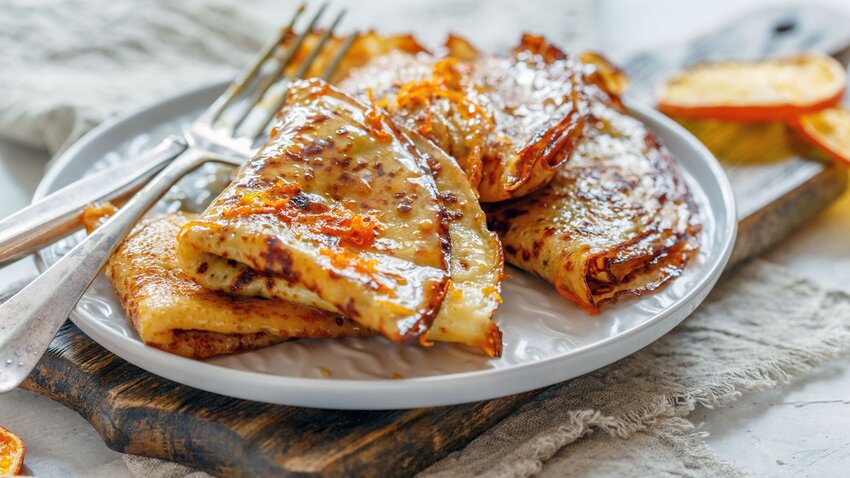
Sweet crêpes are folded into bulky triangles, much like the crêpes you’ll find at a summer fair or food truck. For the French, especially the Bretons, crêpes aren’t just a delicacy — they’re a staple in any home and a comfort food at that. Not only is the batter easy to make, there’s a certain element of fun to making these thin, flippable pancakes.
Maybe that’s why there’s an entire day dedicated to them. Le Jour Des Crêpes on February 2nd (also known as la Chandeleur) is a celebration of all things crêpes and an excuse to gorge yourself on every style and kind of crêpe known to humankind. No matter what or when you’re eating, you’ll be holding up your empty plate for just one more crêpe, s’il vous plaît.

